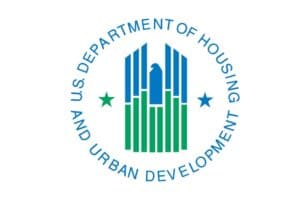At NH&RA’s Fall Developers Forum in Boston a couple weeks ago, Bennett Applegate, Jr. of Applegate & Thorne-Thomsen and Jesse Elton of The Community Builders provided some clarity on the nuances of Faircloth to RAD and the opportunities the program has created.
The Faircloth to RAD program, now called “Restore Rebuild,” represents a transformative pathway under HUD.
Here’s an overview of the program and the opportunities it creates for affordable housing multifamily rental development:
Background of Faircloth to RAD/Restore Rebuild
1. Faircloth Amendment: This amendment restricts public housing agencies (PHAs) from increasing their public housing inventory beyond the units they owned or operated as of Oct. 1, 1999. Despite this cap, many PHAs have unused “Faircloth Authority,” representing over 250,000 units authorized to be built across the U.S.
2. RAD Framework: Initially authorized in 2011 as the Rental Assistance Demonstration (RAD) program, it aimed to convert public housing operating and capital funds into Housing Assistance Payments (HAP), allowing agencies to leverage private funding for development and preservation projects.
3. Program Transition to Restore Rebuild: The renaming highlights its expanded focus on rebuilding affordable housing and integrating public-private financing methods to enhance multifamily housing development.
Program Opportunities
1. Leverage of Existing Resources: PHAs can convert unused Faircloth Authority into project-based rental assistance, unlocking federal subsidies previously limited by the amendment.
2. Expanded Partnerships: PHAs can collaborate with private and nonprofit developers to create mixed-income, sustainable housing developments. This includes using tools like:
- LIHTCs;
- State and local funds; and
- Private loans.
3. Enhanced Financing Mechanisms:
- The conversion of operating and capital subsidies to predictable HAP contracts attracts more diverse investment sources; and
- PHAs can also tap into HUD initiatives, like the Choice Neighborhoods Initiative for comprehensive community revitalization.
4. Flexibility in Development:
- PHAs can “federalize” state public housing or access RAD’s project-based voucher programs as an alternative to traditional models; and
- Mixed-finance models ensure developments remain financially viable while preserving affordability.
5. Speed of Delivery: Projects under Restore Rebuild have streamlined processes, targeting unit delivery within nine months to one year.
Case Examples and Outcomes
1. Pershing Place, Chicago, IL: A partnership involving The Community Builders, the Chicago Housing Authority and other stakeholders demonstrates how the program integrates public housing redevelopment into broader community planning. Faircloth-authorized units were converted to rental assistance, enabling CHA to attract financing. The RAD model allowed CHA to provide project-based vouchers, making the units affordable while ensuring financial sustainability.
2. Impact on Major PHAs: Cities like New York, Los Angeles and Chicago lead in utilizing the program, allowing for significant expansions in affordable housing stock.
Program Challenges
- Compliance Requirements: PHAs must adhere to HUD’s stringent reporting and civil rights obligations; and
- Funding Gap Risks: While RAD aims to be budget-neutral, economic fluctuations can impact long-term project viability.
Conclusion
The Restore Rebuild program fosters innovation in affordable housing development by leveraging federal, state and private resources. It provides PHAs and their partners with tools to overcome historical funding limitations, transforming vacant or underutilized authority into vibrant, mixed-use communities. Refer to HUD Exchange for more useful material on the RAD process.
Applicable HUD Notices
- RAD Implementation Notice: H-2019-09 PIH-2019-23 (HA), Rental Assistance Demonstration REV-4; and
- Fair Housing, Civil Rights and Relocation Notice: H 2016-17; PIH 2016-17 (HA).
